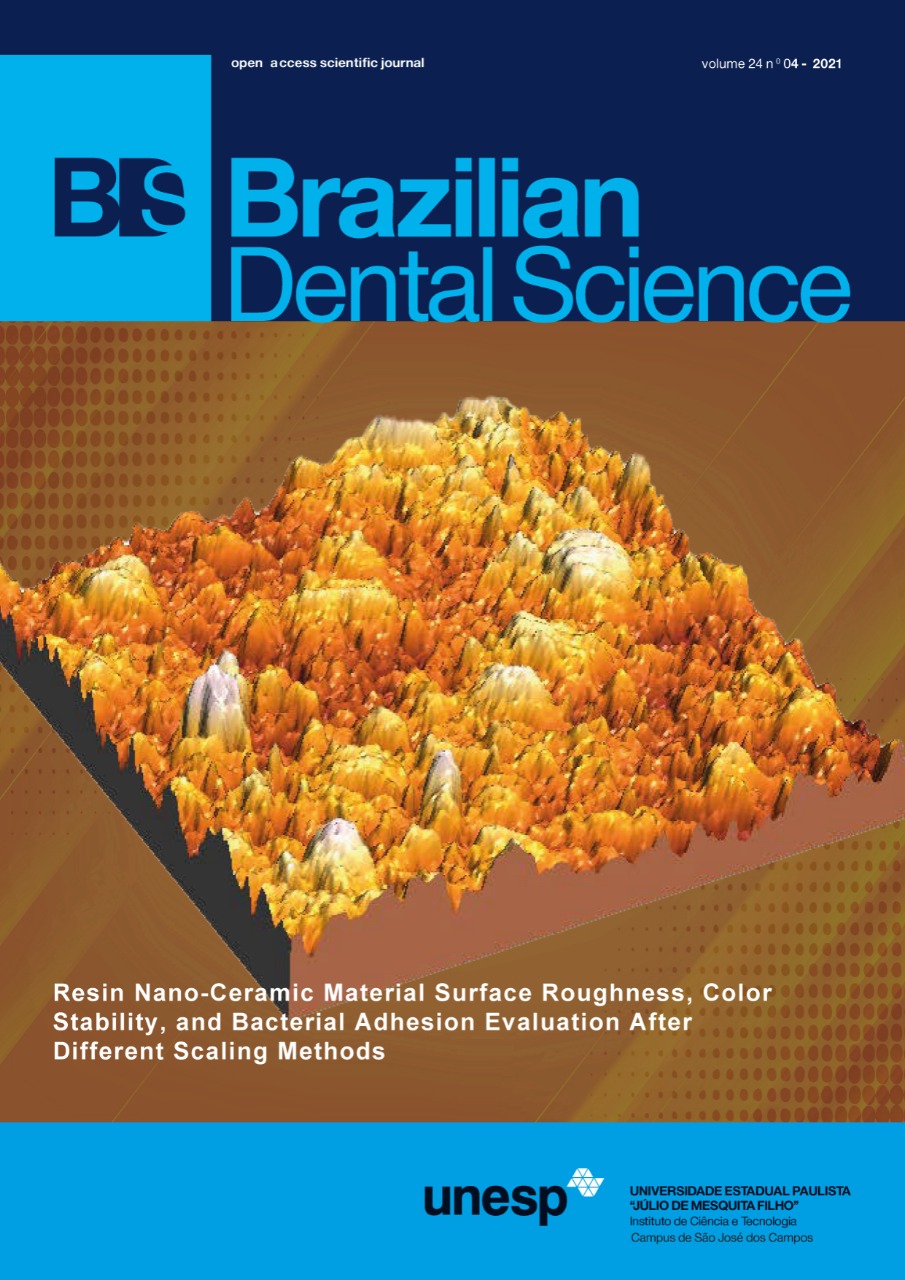Estimation of the autoclave and different surface treatments on microleakage between soft liner and heat-cured acrylic
DOI:
https://doi.org/10.14295/bds.2021.v24i4.2610Resumo
Objective: The present study was oriented to estimate the effect of different surface treatments on the microleakage between the soft liner and acrylic with and without the use of autoclave as disinfection method. Material and Methods: Sixty samples were split into two groups: the autoclaved groups and non-autoclaved groups. Each one subdivided into three groups: first one without any treatments as a control group; in the second group surface of the samples were treated with CO2 laser (10.6 nm wavelength for 15 seconds), and in the third group the surface was treated with sandblasting. All the samples exposed to thermocycling, then the microleakage test was evaluated by gauging dye penetration depth between the soft liner and acrylic disc using a digital microscope. Data analyzed statistically by One-way ANOVA and Tukey's post-hoc tests. In addition, t-test was used for comparison between two groups . Results: The maximum mean values for the microleakage were observed in the untreated group (control) followed by the group treated by CO2 laser and the lowest mean value of microleakage was related to the third group for both non-autoclaved and autoclaved groups with significant differences among them. In addition, depending on the use of autoclave, there was non-significant in all studied groups. Conclusions: There was a decrease in the microleakage when the surface treated with CO2 laser and sandblast. The use of autoclave did not badly change the microleakage between the soft liner and denture base.
Keywords
Microleakage; Soft liner; Autoclave; CO2 laser; Sandblast.
Downloads
Downloads
Publicado
Como Citar
Edição
Seção
Licença
TRANSFERÊNCIA DE DIREITOS AUTORAIS E DECLARAÇÃO DE RESPONSABILIDADE
Toda a propriedade de direitos autorais do artigo "____________________________________________________________________" é transferido do autor(es) para a CIÊNCIA ODONTOLÓGICA BRASILEIRA, no caso do trabalho ser publicado. O artigo não foi publicado em outro lugar e não foi submetido simultaneamente para publicação em outra revista.
Vimos por meio deste, atestar que trabalho é original e não apresenta dados manipulados, fraude ou plágio. Fizemos contribuição científica significativa para o estudo e estamos cientes dos dados apresentados e de acordo com a versão final do artigo. Assumimos total responsabilidade pelos aspectos éticos do estudo.
Este texto deve ser impresso e assinado por todos os autores. A versão digitalizada deverá ser apresentada como arquivo suplementar durante o processo de submissão.




























